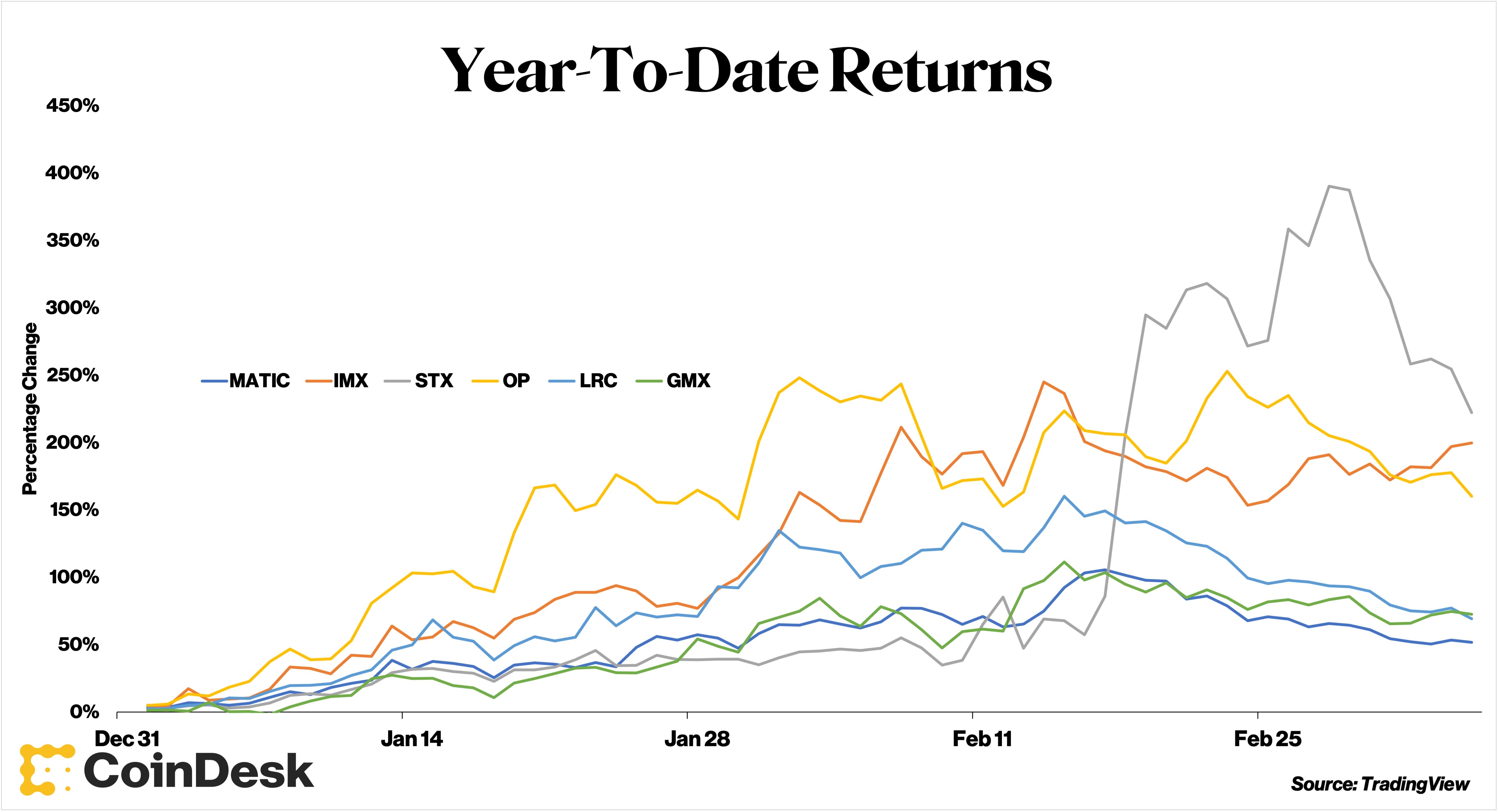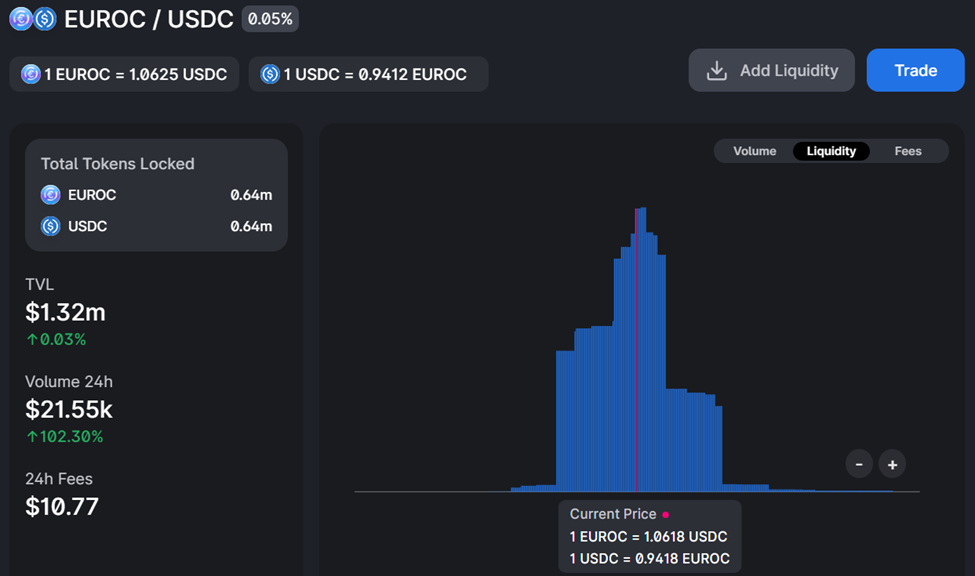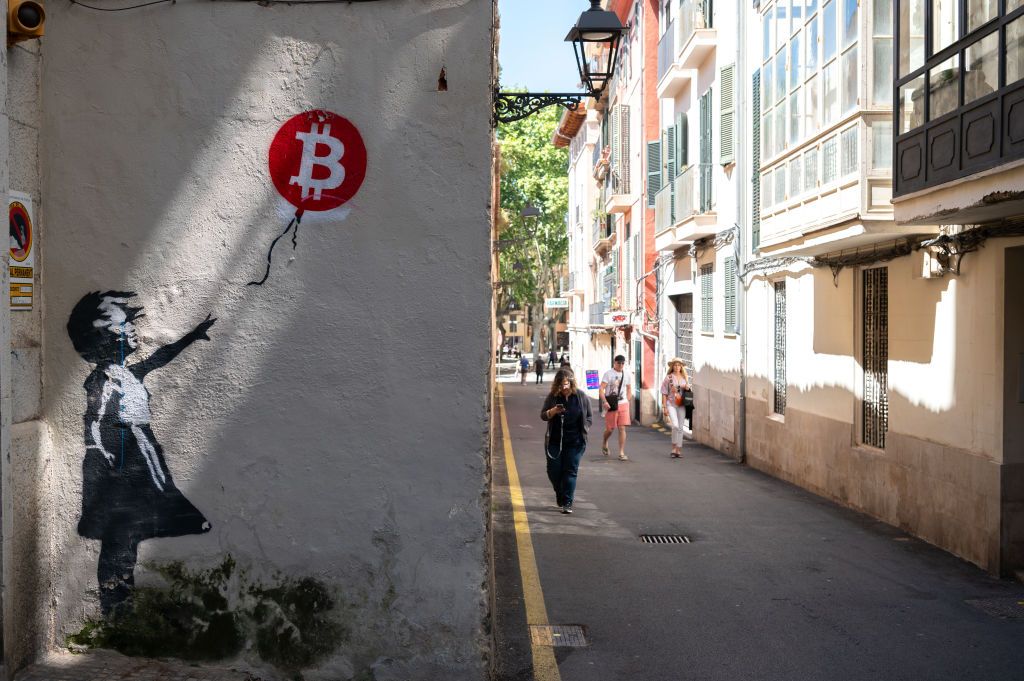This week, Glenn Williams Jr. tackles one of the core bits of infrastructure that anyone in the hunt for crypto investments must grasp.
Then, Todd Groth of CoinDesk Indices wades into one of traditional finance’s biggest numbers: $7 trillion.
– Nick Baker
You’re reading Crypto Long & Short, our weekly newsletter featuring insights, news and analysis for the professional investor. Sign up here to get it in your inbox every Wednesday.
Let’s Talk About Crypto Protocol Layers and Why Investors Must Examine Them
Finding new and profitable investment ideas is the unending task facing any investor or allocator of capital. While bitcoin (BTC) and ether (ETH) dominate the discussion around cryptocurrencies, the opportunity set for investors expands well beyond.
Some of those candidates are, however, intrinsically tied to the Bitcoin and Ethereum blockchains, borne out of the need to enhance their capabilities. Bitcoin and Ethereum are known as layer 1 (L1) protocols, and these attempts to scale and expand them are called layer 2s (L2).
An L1’s value stems from “blockspace,” territory on a blockchain where information or a smart contract lives. BTC, ETH and tokens for other L1s are valued based on demand for that. They are, so to speak, the tickets to a dance and cost more when more people want to attend; one reason to buy is because you expect higher prices later due to people scrambling to get in the door.
Bitcoin lets people engage in peer-to-peer transactions; the price of BTC rises with demand for that. Ethereum and similar L1 protocols grant people access to smart contracts, decentralized finance (DeFi) protocols and, eventually, stuff we can’t currently envision; ETH and its peers ride along with that.
But blockspace is scarce. And Ethereum, the biggest smart contract-based layer 1, cannot handle anything close to the volume seen elsewhere in finance. It can process a few dozen transactions per second, trailing the Visa network or New York Stock Exchange by several orders of magnitude – a big obstacle to decentralized finance (DeFi) taking over traditional finance tasks.

So, if a layer 1 protocol is a room people are rushing to get into, imagine a long line at the door and skyrocketing price of admission. That’s where layer 2s come in. They act like an overflow room at a convention. If you can’t get into the main auditorium to see the hot keynote speaker, you can get into a side room with a TV screen showing their speech and meet with other attendees.
An L2 is similar. It is a place where transactions can be offloaded from the L1 for faster and/or cheaper processing, but the trades are intrinsically linked to and can be fed back into the L1. If an L1 is a room people want to get into, L2s represent the construction of new ways to get inside, allowing broader access and reducing congestion.
For Ethereum, well-known layer 2 protocols include Polygon, Arbitrum and Optimism. For Bitcoin, there’s Stacks.
Like their L1 counterparts, L2 protocols generally have their own native token, which serves as an incentive to use the network. As an investor, I view a layer 2 as an investment in the infrastructure that allows greater access to the main room, while providing space for developers to build new and useful things. And so even if I don’t know what those useful things are yet, I know that more levels and doorways are needed in the building itself. Knowing that, I want to invest in the materials that will provide the new infrastructure.
Let’s examine a few:

The layer 2 list certainly doesn’t stop here. Optimism (OP), Loopring (LRC) and numerous others are designed to increase utility within the crypto ecosystem. Also, Arbitrum has gained major traction as an Ethereum L2, having recently surpassed it in terms of number of transactions in a 24-hour period.
The success or failure of these projects will be determined over time, but the impact, opportunity and access they provide should be on everyone’s mind.
– Glenn C. Williams Jr., CMT
Crypto Rails Should Bring Efficiency Gains to the $7T-a-Day TradFi FX Market
Crypto prices are wobbling amid Silvergate Bank’s woes and the U.S. government’s regulation-by-enforcement campaign. But I’m looking past that, thinking about the likely future collision of crypto and the legacy plumbing of finance and markets. How will they interact? What efficiencies will result from deploying the best of both worlds? What happens to existing over-the-counter and private markets? What real-world assets will shift to on-chain trading?
A recent paper from Uniswap Labs, the decentralized-finance (DeFi) titan, and stablecoin giant Circle previews that future.
The authors studied the first six months of trading on a Uniswap liquidity pool that contains USD coin (USDC) and euro coin (EUROC). (It launched in July.) More than $120 million traded through the automated market maker (AMM), which provided liquidity 24/7 without a hiccup during the depths of crypto winter.

The Uniswap EUROC/USDC liquidity pool on March 5. (Uniswap)
Sure, there’s only $1.32 million in total value locked (TVL). But something significant is afoot here as two fiat-backed stablecoins get swapped efficiently and without fanfare on chain.
The traditional currency market is something like a $7-trillion-a-day, mostly over-the-counter business. It’s opaque and complex. There’s no official prices. And an estimated one-third of all volume (about $2 trillion daily) has settlement risk, according to a 2022 Bank for International Settlements survey.
Meanwhile, this USDC/EUROC pool completed transactions on a public ledger, and did it really efficiently. During the study period, prices stuck within a few basis points of the conventional EUR/USD exchange rate. There was weekend liquidity, a time when the traditional FX spot market goes dark. And there were fewer intermediaries and their associated fees and frictions. Automation worked.
“DeFi can reduce remittance costs by as much as 80 percent relative to banks and money transmitters relying on traditional payment systems,” the study authors wrote. That amounts to “a gain of around $30 billion per year going to households” most reliant on remittance payments from families across borders, they added.
While a lowly USDC/EUROC stablecoin liquidity pool might seem like a rather mundane example of crypto in action, it points to the numerous benefits, increased efficiencies of a blockchain future. Don’t overlook that amid the day-to-day of crypto price action.
– Todd Groth, CFA, head of index research at CoinDesk Indices
Takeaways
From CoinDesk’s Nick Baker, here’s some recent news worth reading:
To hear more analysis, click here for CoinDesk’s “Markets Daily Crypto Roundup” podcast.







